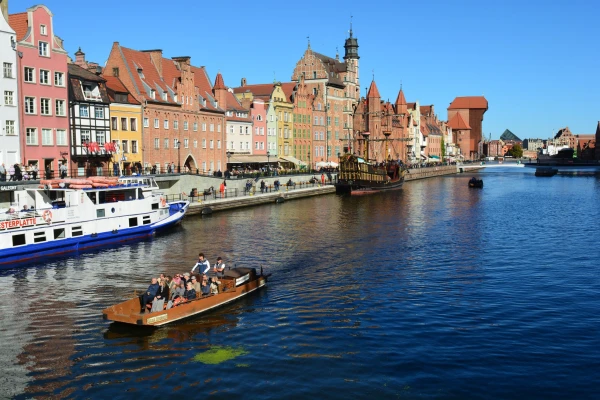
"Is that a fair? A holiday?" – the surprised response of a Riga resident to my video sent from Długi Targ Square. In fact, this vast space is translated as "Long Market" – and there, everyone either trades and buys or entertains themselves in various ways.
However, this does not happen in the format of an official event, as in the cities of Latvia, but simply on a Saturday when the people of Gdansk and tourists pour out onto the streets.
36 + 20 million
The first impression of the capital of Polish Pomerania is how many people there are! Indeed, there are crowds, and it is not even a holiday, but a regular working day, yet there are plenty of people – both on the streets and in shopping centers. The most common sights are middle-aged families and groups of cheerful young people. Poles, judging by the crowds in such places, are a nation of prosperity and positivity. However, it is enough to walk half a kilometer to discover quite sour faces and a low-budget look amidst typical "Khrushchyovkas" (though painted in cheerful colors and with flowers on the balconies), and suddenly, a 14th-century church.
This proximity is due to the fact that during the assault by the Red Army on the fortified area of Danzig-Gottenhafen-Sopot (now Gdansk-Gdynia-Sopot, or Tricity), the medieval city was essentially wiped off the face of the earth. Only a few Gothic fragments survived, among which is, for example, St. Barbara from 1387. Nearby, there is a machine releasing colorful foam balls into the air. Sounds of an organ and singing can be heard from inside. I enter and find myself at a Catholic wedding. The groom's name is Miguel. So, it will be a strong Polish family, probably with a Latin American component.
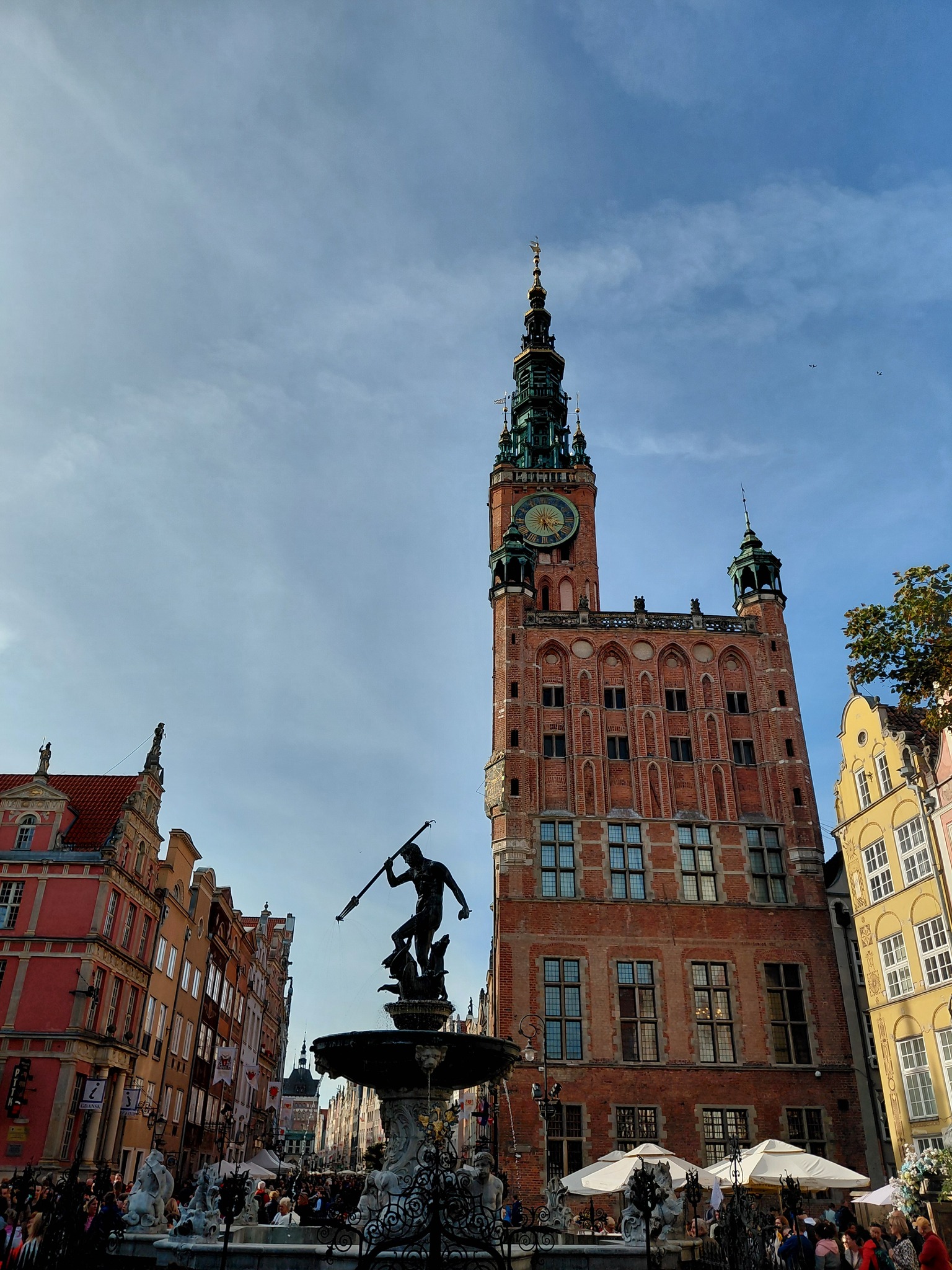
City Hall, 1488. Photo by the author.
Today's Poland has a population 20 times greater than Latvia, and territorially this country is 5 times larger than us. So we can see how much denser the construction, entrepreneurship, and culture are here. There are many justifications for this, for example, when rising high with a Ryanair Boeing 737 that makes daily flights to Lech Wałęsa Airport. Because it is from the ceiling of bird flight that one can see how fragmented Polish lands are into small plots. Every time, peasant land was divided among sons – hence the resulting checkerboard pattern. It is hard to find an owner of hundreds of hectares of land in the country – as a rule, the area of plots can be counted on the fingers of both hands, but it is indeed one's own, native, and cultivated with care. And therefore, in Polish 5-star hotels at the entrance, there are boxes with fresh farmer's apples for guests.
And yes, the Polish People's Republic did not know forced collectivization, just as it did not know de-churching. A major street in Gdansk is named after the priest Jerzy Popiełuszko, who was killed by local security agents, but those operatives were imprisoned back in socialism. However, they allowed the construction of a powerful monument with anchors in memory of those who died in the dockworkers' riots of 1970. By the way, the symbolism hides an illusion of the Home Army – the largest partisan unit fighting against German occupation during World War II. The anchor somehow connected Poles with their Underground State, and that is exactly how it was.
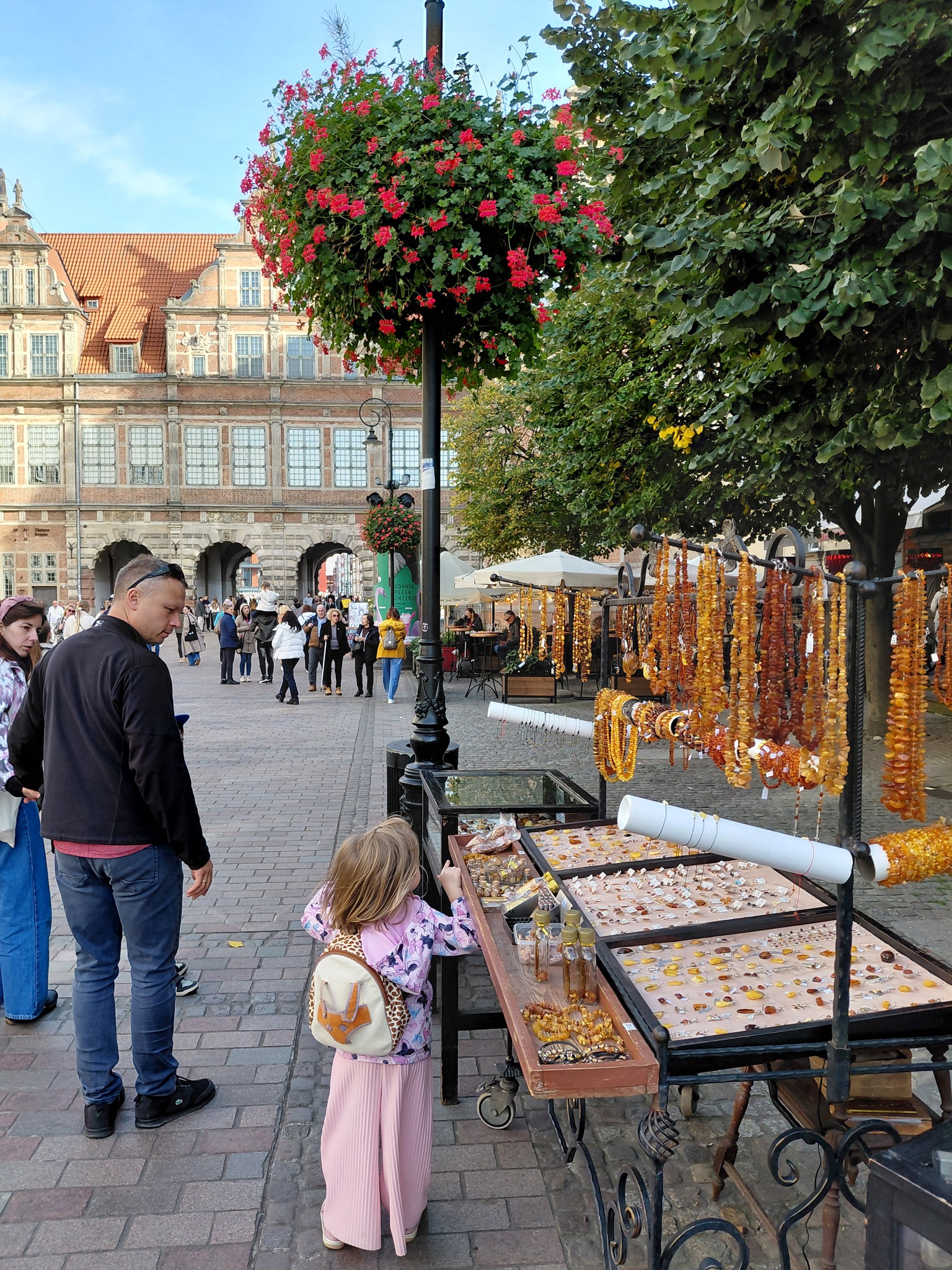
The kids are the real amber of Poland. Photo by the author.
What Were They Fighting For?
Danzig is first mentioned in chronicles in 997 in connection with the mission of Saint Adalbert (Wojciech) to Prussia; however, according to archaeological excavations, a settlement at the site of Gdansk existed as early as the 5th century AD – and it has always been a port city. The very geography of the Vistula estuary, with its numerous channels and canals, predisposes to maritime trade. Thus, the place became a point of confrontation between Slavs and Germans.
From 997 to 1308, Gdansk was part of Poland until it was captured by the Teutonic Knights, annexed to Prussia, and renamed Danzig. From 1361, Danzig became a member of the Hanseatic League. In 1466, after the end of the Thirteen Years' War between the Order and Poland, Danzig was reclaimed by the Poles, and its original name was restored. The city received broad privileges from Polish King Casimir IV: the city independently elected officials, conducted almost independent foreign policy, and possessed coinage regalia.
Gdansk's opposition to Polish King Stephen Báthory was suppressed in 1577; however, the city retained its privileges, settling for a payment of tribute. During the War of the Polish Succession, the city was captured by the troops of Russian General Minich, and in 1793, as a result of the partition of Poland, Danzig fell to Prussia and became Danzig again. After being captured by the French in 1807, Danzig was declared a free city (the Danzig Republic), but after a devastating siege by the Russians in 1813, it returned to Prussia. Then came a quiet German century, and after World War I – Free Danzig. It was this Danzig that Hitler wanted to possess; the Poles resisted, and the rest is well known...
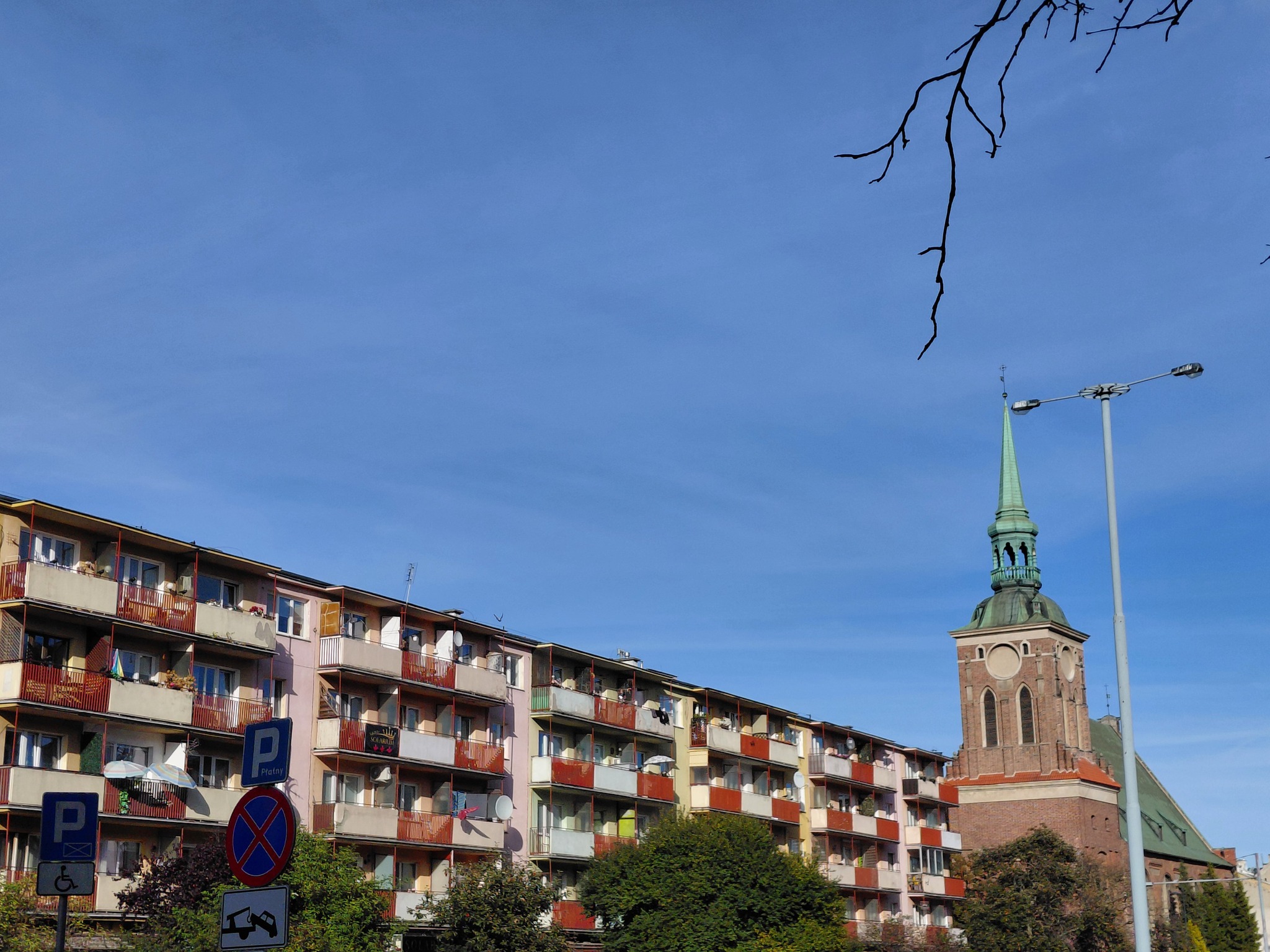
Two worlds, two eras. Photo by the author.
Was the stubbornness of the then rulers worth the destruction of a beautiful city? Yes, much has been restored, but often these are simple replicas of the Middle Ages. On Spichrzów Island (Skladów) on the Motława River – hundreds of tall granaries with sharp roofs: some "native," raised from ruins, others – copies. Everywhere there are hotels, restaurants, boutiques. And tourists: first of all, locals, Poles, and then... Germans. Old ladies and old men, God's dandelions, recall stories from their parents about how it used to be here. The St. Mary's Cathedral has been under restoration for 35 years by former Danzig Germans; construction is still ongoing, but inside one can be amazed by its grandeur. This is currently the last Gothic cathedral in the world where the vaults were constructed by hand, as in the Middle Ages. Was it worth bringing it to destruction?
Another rhetorical question – did the workers of Poland win or lose from "Solidarity," which started here in Gdansk 45 years ago? The airport man, Wałęsa, has just celebrated his 82nd birthday and continues to energetically comment on everything in the world, although the former president has been caught working for the secret services under the pseudonym "Bolek." And the cranes of the old Lenin Shipyard, where the famous trade union was born, are now silent. The company has gone bankrupt, and Poland's shipbuilding industry, unfortunately, no longer exists as a huge complex.
Their Golden Prosperity
However, the "Narodowy Bank Polski" has not been renamed, nor has the zloty been changed to the euro. And to this day, there remains a touching, weightless aluminum coin worth one grosz! That is less than a quarter of a cent, and there is absolutely nothing to buy with it. Just like with the zloty – unless it is a roll of fresh bread. Based on my many years of experience traveling to Poland, I sadly note that in terms of prices, the gentlemen have leaped ahead of us. The Riga supermarket still offers dozens of food items for up to a euro. The Poles have almost none of that left. Inflation! Defense spending is making itself felt.
These are warlike times, as evidenced by graffiti with a drone and the bestseller by Edyta Żemła "Cardboard Army," which is on the shelves of all bookstores here. I flip through it: the Polish army is a fiction, there are 30,000 soldiers ready for battle. Generals cannot manage the army. Ammunition will last only a few days of full-scale war. On one hand – horror, horror, and on the other – Poles criticize their authorities and ask sharp questions for which, in our country, they would have long been taken note of.
"I don't know Russian," the guy behind the reception desk at the hotel firmly replied to me and switched to the language of Shakespeare when we tried to figure out why in my phone's reservation, my stay at their location started today, while in their computer it started tomorrow. Nevertheless, they quickly resolved the issue without taking a penny from the card. Unfortunately, there was no Bible in the room (which would have seemed nonsensical a couple of decades ago), but there was high-speed internet with all the "forbidden" sites that are blocked in Latvia. They are not afraid!
The Road to the Sea
Naturally, how could one arrive in Pomerania and not venture out to the Baltic Sea? In this regard, my companion was Mr. Krzysztof, a historian and journalist, a treasure trove of information and an enthusiastic 70-year-old car enthusiast. "My favorite car brand is new," says the working pensioner at the wheel of a hybrid Suzuki. The huge internal market of Poland, compared to ours, dictates a wide range of cars.
The highways, interchanges, and roundabouts in Poland are all ultra-modern, with minimal traffic jams, worthy of the best examples of Western Europe. The public transport system is clever: in Gdansk, one can travel by bus and tram, but from far-off Gdynia, a trolleybus reaches the resort of Sopot. In general, this forms an 800,000-strong agglomeration, with Gdansk itself accounting for about 0.5 million. Less than Riga, but much more ambitious.
In the same way, the Polish resort of Sopot is much more glamorous than our Jurmala.
In the 18th century, the Danzig nobility loved sea bathing, and in the next century, Sopot grew – a town of boarding houses and casinos. Personally, Empress Augusta opened a church here with money from her husband Wilhelm II. "Between the First and Second" Sopot was part of Free Danzig and developed excellently. The construction of the Grand Hotel in the 1920s cost 20,000,000 guilders (the city's currency units under the patronage of the League of Nations). This is as if the sanatorium in Kemeri stood right on the shore and was still operational. (By the way, in this paradise of life-wasters, V.V. Putin personally vacationed when relations between Russians and Poles were fruitful).
I was at the sea in Poland for the first time! The coastline is much wider than ours, plus the outstanding dunes – much higher than the pines that grow on them. Around the bend is the Hel Peninsula, and further, up to the border with East Germany, there are hundreds of kilometers of excellent beaches. This is no longer a shallow cold bay, but the Baltic Sea, powerful and warm: at the latitude of Sopot, only 100 km south of Jurmala, the sun is noticeably warmer here, at the end of September +25.
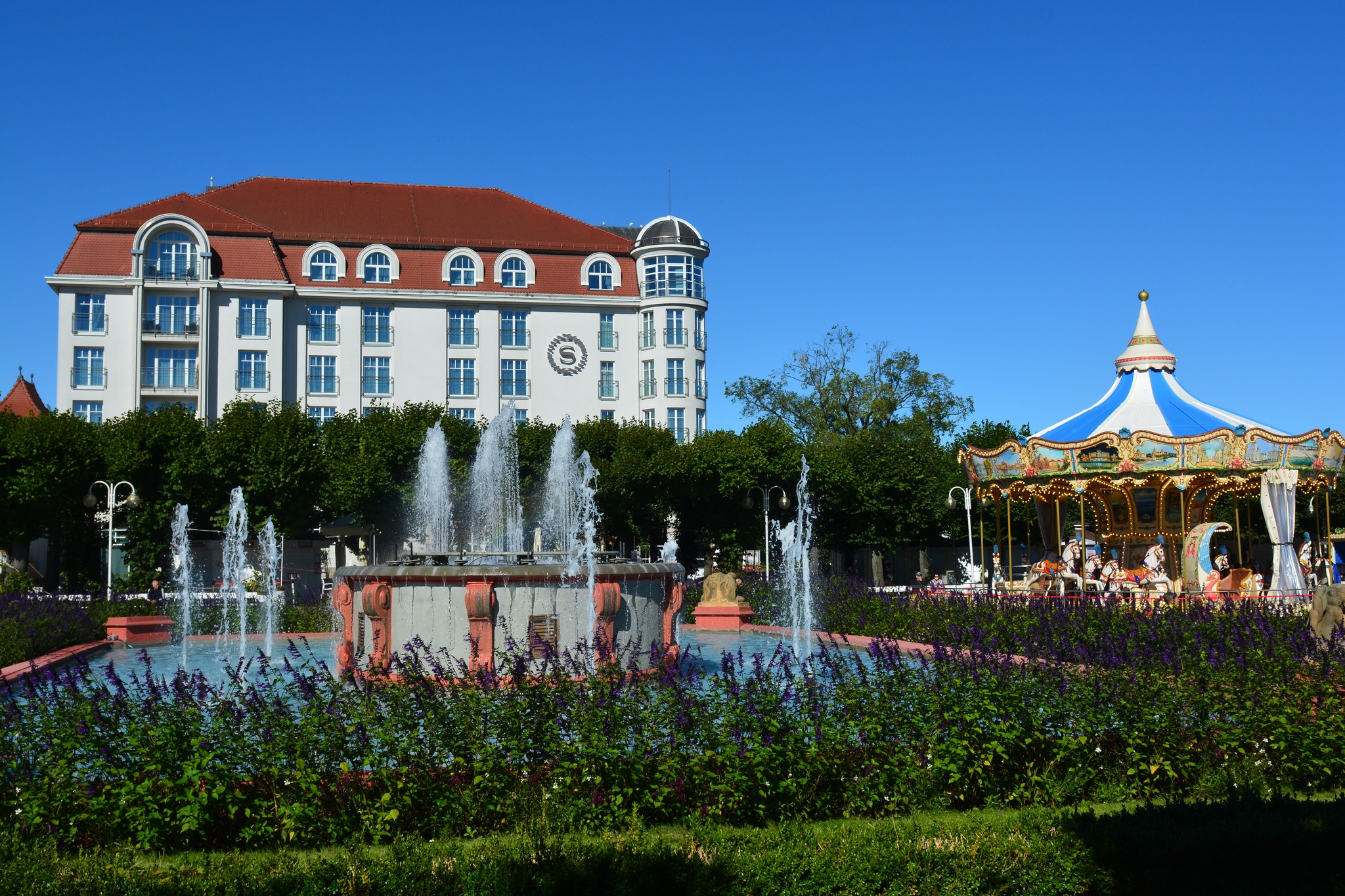
Harmony of Sopot. Photo by the author.
Sopot, of course, is also known for its famous music festival, the one where Alla Pugacheva and many others shone. It still exists today, along with many other shows. In all the resort wealth and promenade – not a single closed door, everywhere offers to feed and water the tourist.
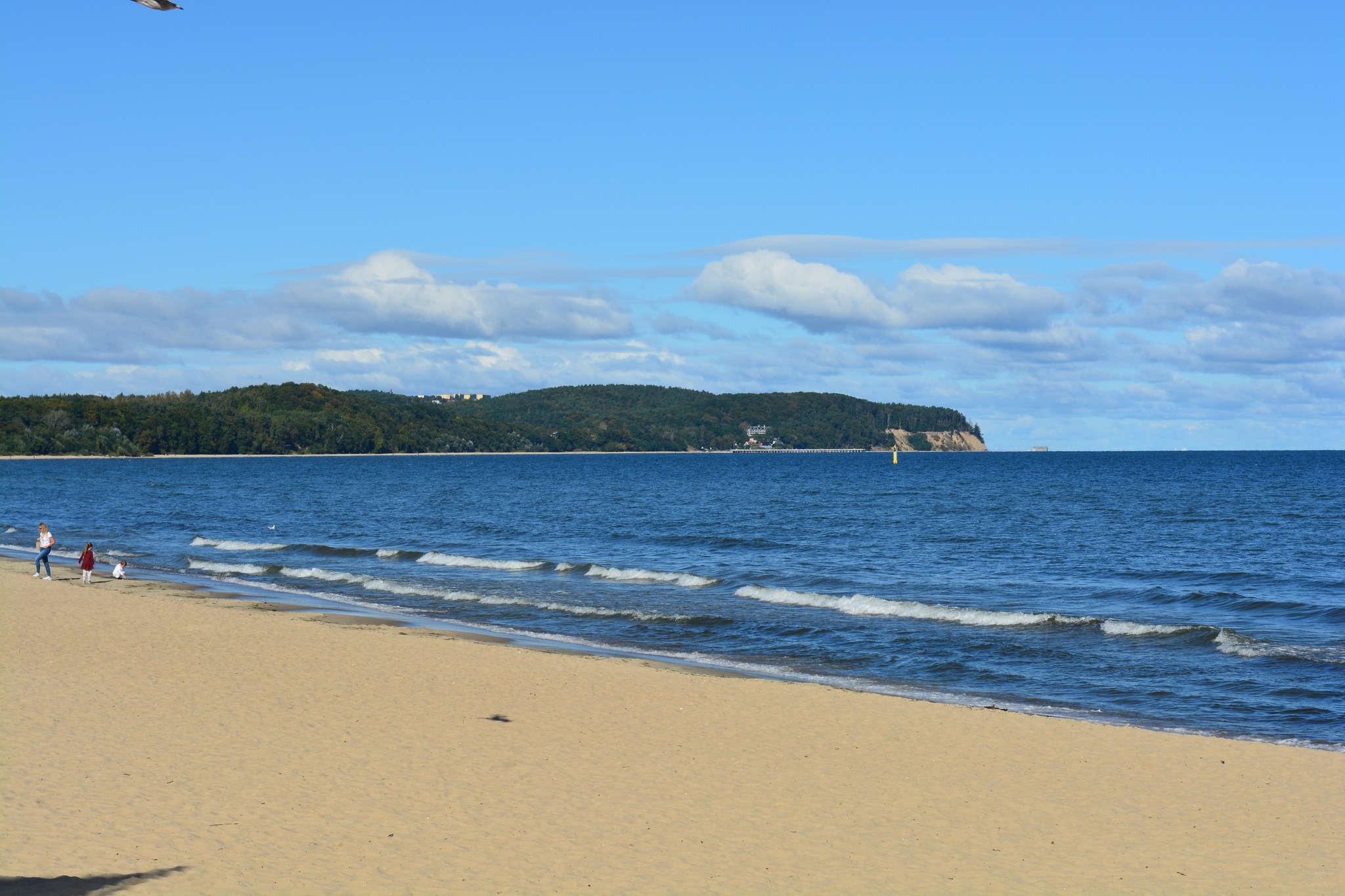
Baltic landscape. Photo by the author.
Here is the coolest wooden pier in Europe, at the end of which is a restaurant and a parking lot for a "pirate" ship for public excursions (and here is the purely functional meaning of such a pier – a dock). Unfortunately, in this regard, Jurmala is completely "dead," and it is hard to imagine that the authorities there would ever consider such a construction. One must not only have a bit of intelligence but also build one's life based on one's own, centuries-old history and culture. And here, unfortunately, there is neither Chopin, nor Sienkiewicz, nor Wajda. However, on the dates, one and the same holiday – Poland celebrates Independence Day on November 11, easy to remember.



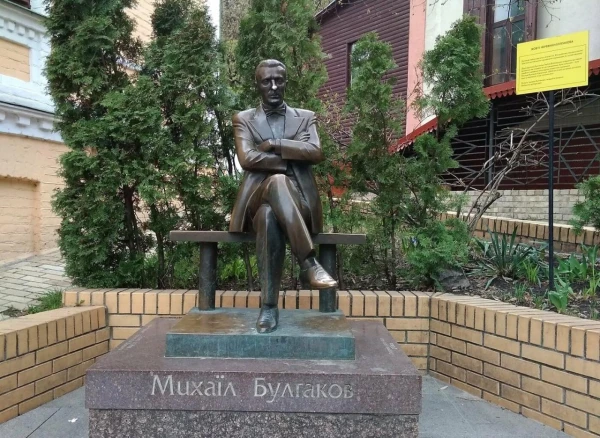



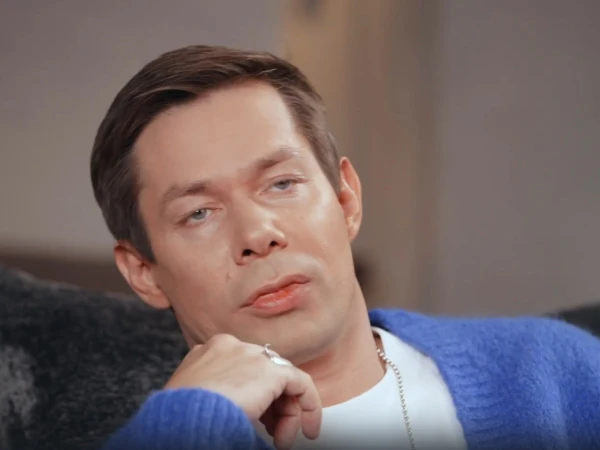
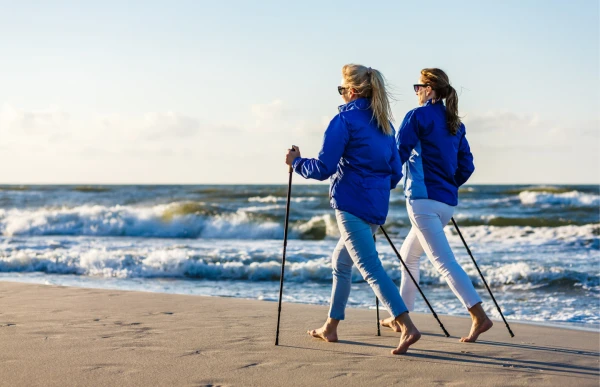


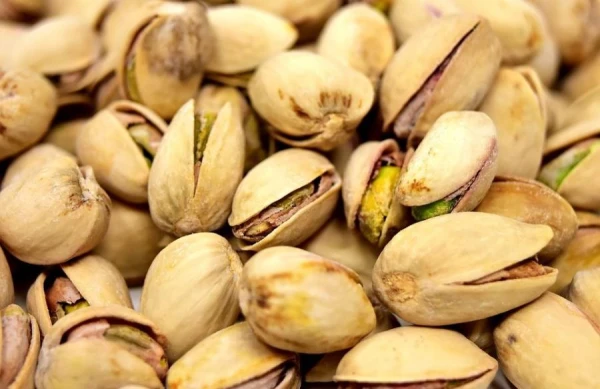


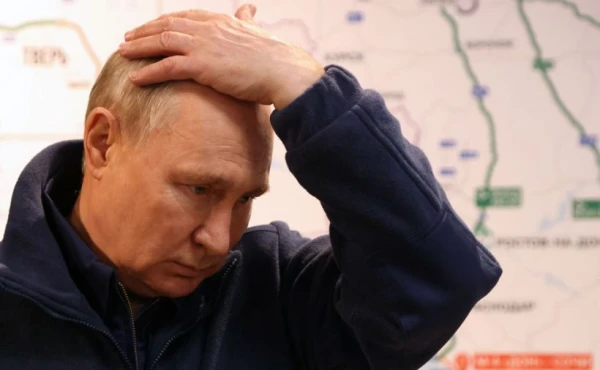

Leave a comment